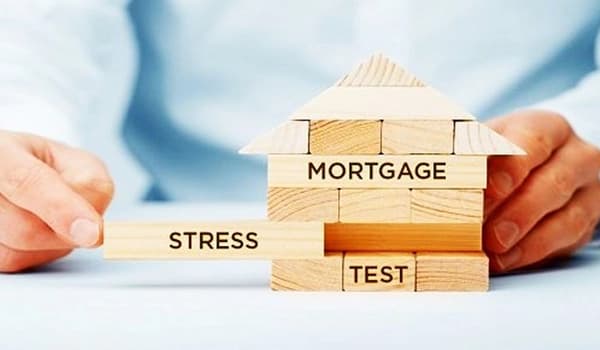How to Get a Mortgage in Toronto

Buying a home is a life-changing experience, and it may seem far-fetched to have some keys in your pocket that open the doors to a place you can call home. This huge gap between you and your dream of owning a home can be filled with a mortgage application. But what are the stages of getting a mortgage? Let’s find out.
There Are 7 Steps to Getting a Mortgage in Toronto:
You can already imagine yourself in your new home by taking the following seven steps.
1. Assess Your Financial Readiness for a Mortgage in Canada
The first thing your potential lender asks for is your financial records, and they will reject your application if your financial background doesn’t meet their criteria.

- Credit score: Your credit score is a decisive factor for prime lenders, i.e., banks (the “Big Six”). The minimum credit score to qualify for a mortgage is 680, but some alternative lenders show more flexibility regarding the credit score.
- Income and employment: The lender will also demand documentation regarding your salary. The required income depends on the size of the mortgage. For instance, your income should be 125000$ to qualify for a 500000$ mortgage.
- Existing debts: Mortgage lenders assess your ability to repay the mortgage by metrics such as Gross Debt Service (GDS) and Total Debt Service (TDS). The preferred GDS ratio is 39%, but DTS should at least amount to 44% of your income.
- Savings: The higher your savings are, the larger your down payment can be. The amount of down payment directly affects your monthly payments and reduces the interest costs. Plus, it reassures the lender that you can repay the mortgage more conveniently.
2. Explore Your Mortgage Options: Steps to Get the Best Deal
Fortunately, you have various options to choose from based on your financial situation. There are various mortgage types based on the lender and repayment structure.
3. Getting Pre-Approved: The First Step in the Mortgage Loan Process
Getting pre-approved sheds light on everything, and you will understand what kind of deal you can get. Plus, by getting pre-approved, you assure the lender that you’re a serious applicant. In order to get pre-approved, you should provide the required documentation, such as your credit report, proof of income, proof of assets, proof of employment, and debt information.
Once you submit the application form, the lender runs a credit check to evaluate your creditworthiness. Once your financial background satisfies the lenders, you will get a pre-approval letter that indicates the maximum mortgage you’re approved for, the interest rates and any other conditions you must meet. The pre-approval is valid for at least 60 days, but it can extend to 120 days, depending on the lender.
The good thing about the pre-approval letter is how it gets you out of the dark. Once you get pre-approved, you know how much you can spend, and you can narrow down your house hunting to your budget. It saves you a lot of time, and the sellers take you more seriously. It’s worth mentioning that the interest rate is locked as long as the pre-approval is valid.

4. Finding a Property
This step is very uplifting and, for some time, takes your mind off the intense paperwork of getting a mortgage. You can explore the neighborhoods and attend open houses that fall within your price range and suit your lifestyle. You can also do this online by browsing the latest home listings. Realtor.ca is a great reference where you can find thousands of listings online.
If you can’t afford the time to check home listings and evaluate their condition and value, you can leave the matters in the hands of a professional realtor. Just discuss your preferences, and they will find you the best deal. The good thing about working with a realtor is that they often get to know the home listings before they’re public, and they can save you the headache of the price negotiation.
5. Choosing the Right Lender: Crucial Step in the Mortgage Process
There are two main mortgage lenders in Canada: prime lenders and alternative lenders. Prime lenders include Canada’s major banks, AKA the “Big Six,” and alternative lenders comprise of credit unions, mortgage brokers, private lenders and online lenders. The table below can help you find the best lender based on your financial status.
6. Submitting Your Application: First Steps to Get Mortgage Approval
The process of getting a mortgage might vary based on the lender, but the required documentation is more or less the same. You need to share your personal and financial information with the lender and provide details about the property’s type, location, and price.
Submitting your application can be an exhausting process, were you to work with conventional lenders, i.e., banks. However, the complication doesn’t give you a headache in the case of private lenders. You can also work with mortgage brokers to find the best deal and lessen your involvement.
7. Closing the Deal on the Property: Completing the Mortgage Loan Process
It’s time to close the deal. Make sure to review the contract terms, and if you can’t make heads or tails of the contract, have a lawyer take a look at it and sign it off. On the closing day, the mortgage lender will transfer the funds to the seller’s account, and you will receive the keys to your new home.
It’s worth mentioning that you must budget your funds to cover closing costs such as land transfer taxes, legal fees, property taxes, and title insurance.
Post-Purchase Considerations for Mortgage Holders
Getting the mortgage and purchasing your house isn’t the end of the story. You should budget your monthly mortgage payment plus other recurring costs like utilities. You can also set automatic payments to avoid missing due dates. Moreover, you should save some emergency funds as you may encounter some unexpected expenses. A good saving can cover your living costs for three to six months.
In addition, if you encounter money problems, you have some refinancing options, such as a second mortgage, cash-out refinance, and Home Equity Line of Credit (HELOC). These options can help you in repaying the mortgage. You can also get a mortgage life insurance or protection insurance to ensure you can pay the mortgage back no matter what happens to you.
Conclusion
With the proper mortgage application, you can buy your home. There are various types of mortgages and lenders. The best mortgage is the one that fits into your financial situation. This article covered seven essential steps to get a mortgage in Canada. The mortgage process can be complicated, but you can always seek help from a realtor or mortgage broker to explain the mortgage loan process step by step.
- In this post:
- There Are 7 Steps to Getting a Mortgage in Toronto:
- 1. Assess Your Financial Readiness for a Mortgage in Canada
- 2. Explore Your Mortgage Options: Steps to Get the Best Deal
- 3. Getting Pre-Approved: The First Step in the Mortgage Loan Process
- 4. Finding a Property
- 5. Choosing the Right Lender: Crucial Step in the Mortgage Process
- 6. Submitting Your Application: First Steps to Get Mortgage Approval
- 7. Closing the Deal on the Property: Completing the Mortgage Loan Process
- Post-Purchase Considerations for Mortgage Holders
- Conclusion



